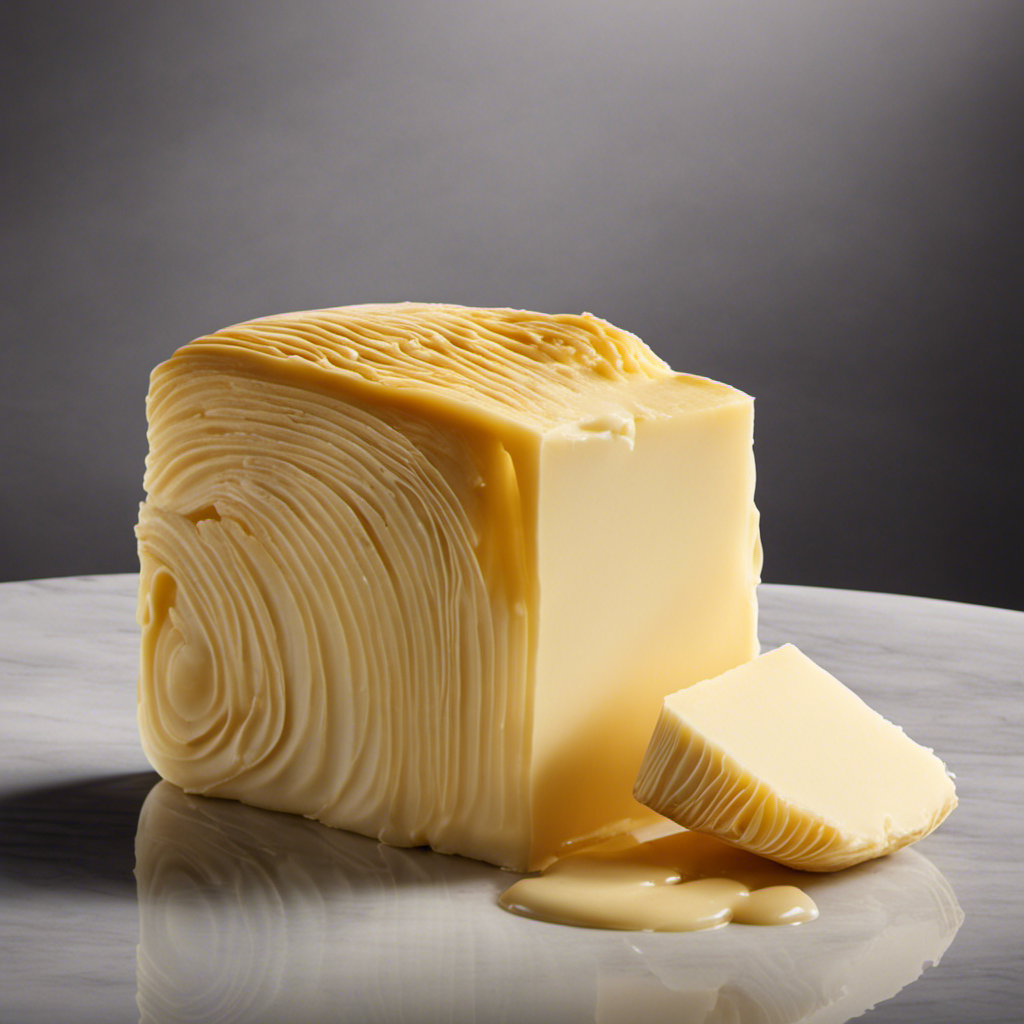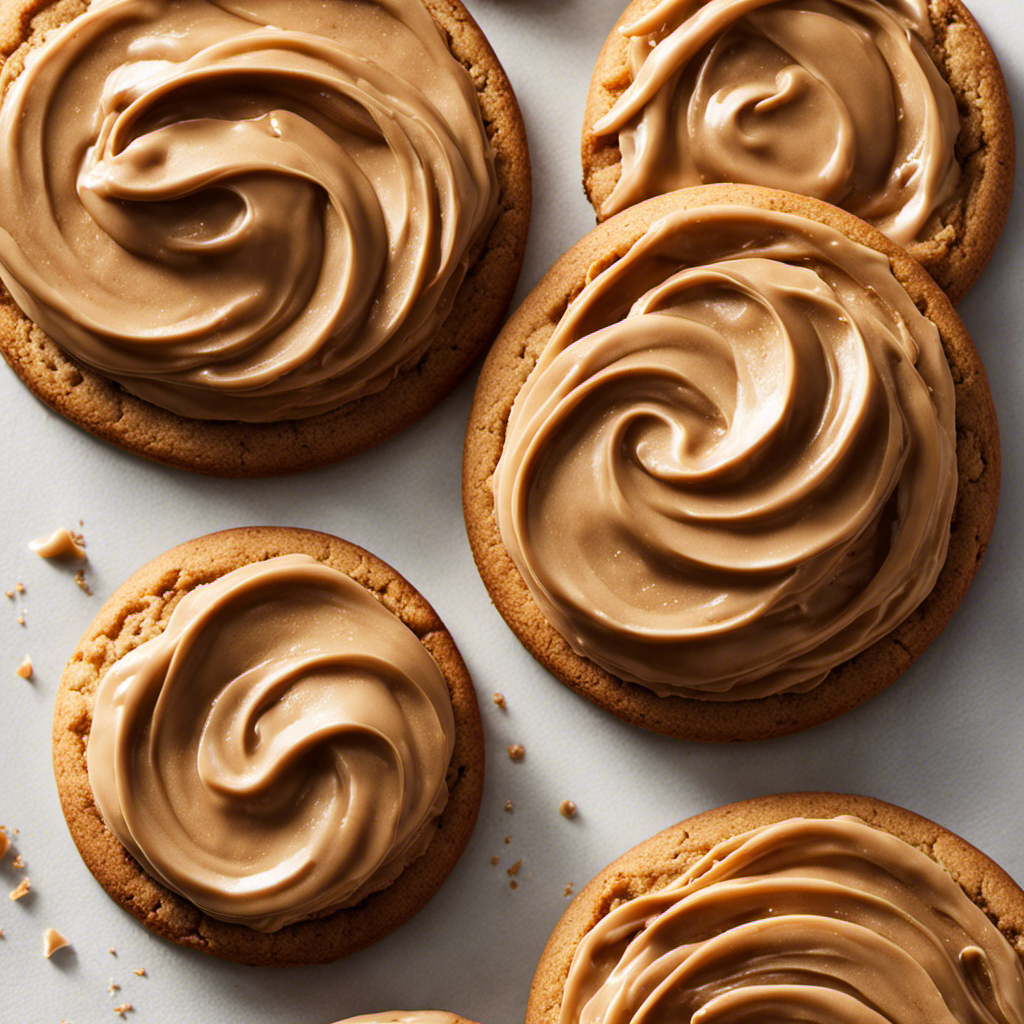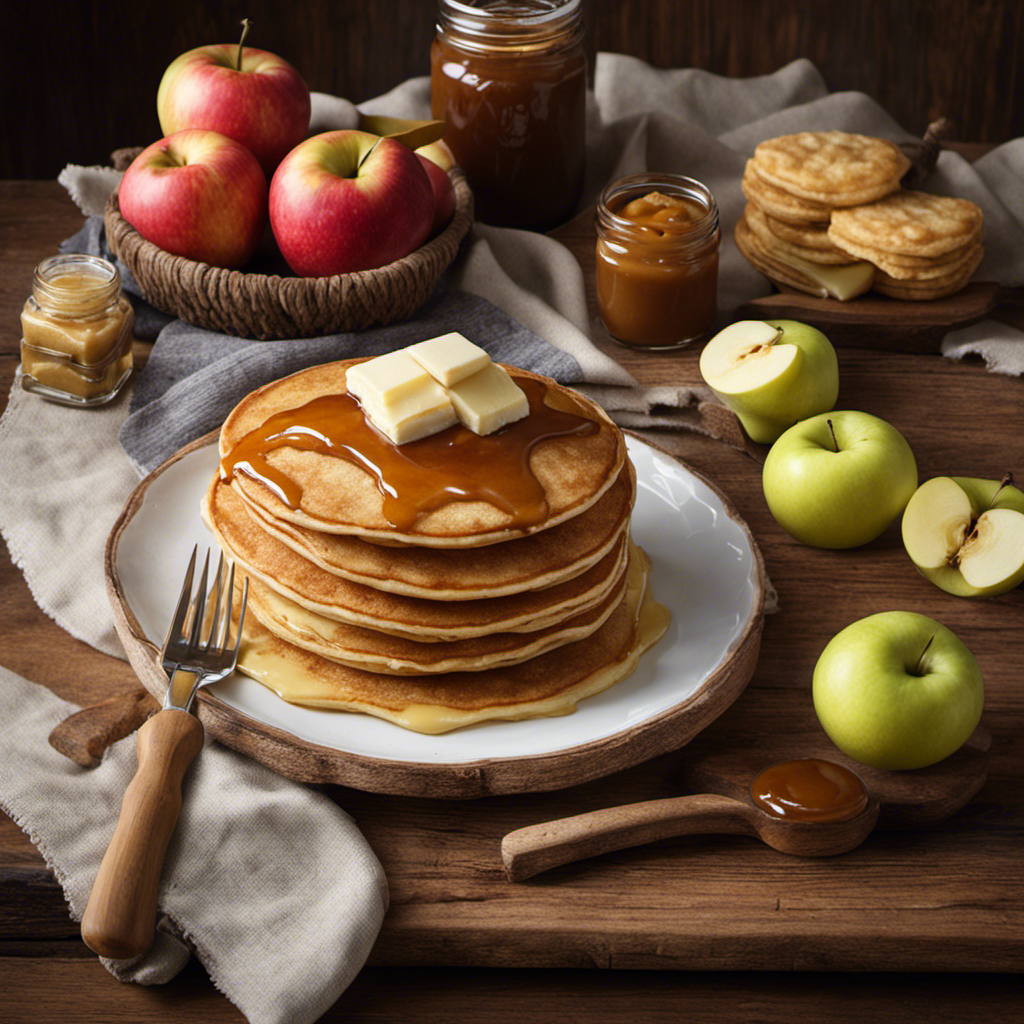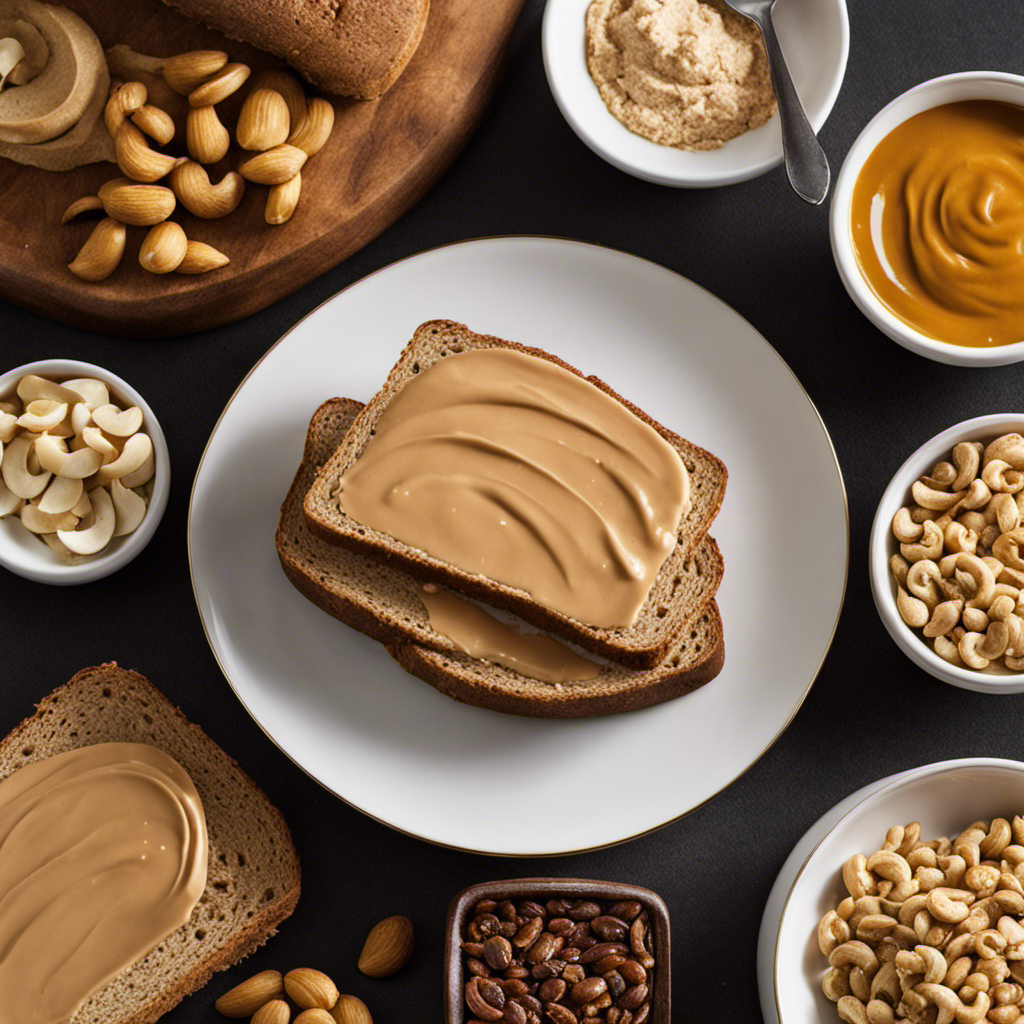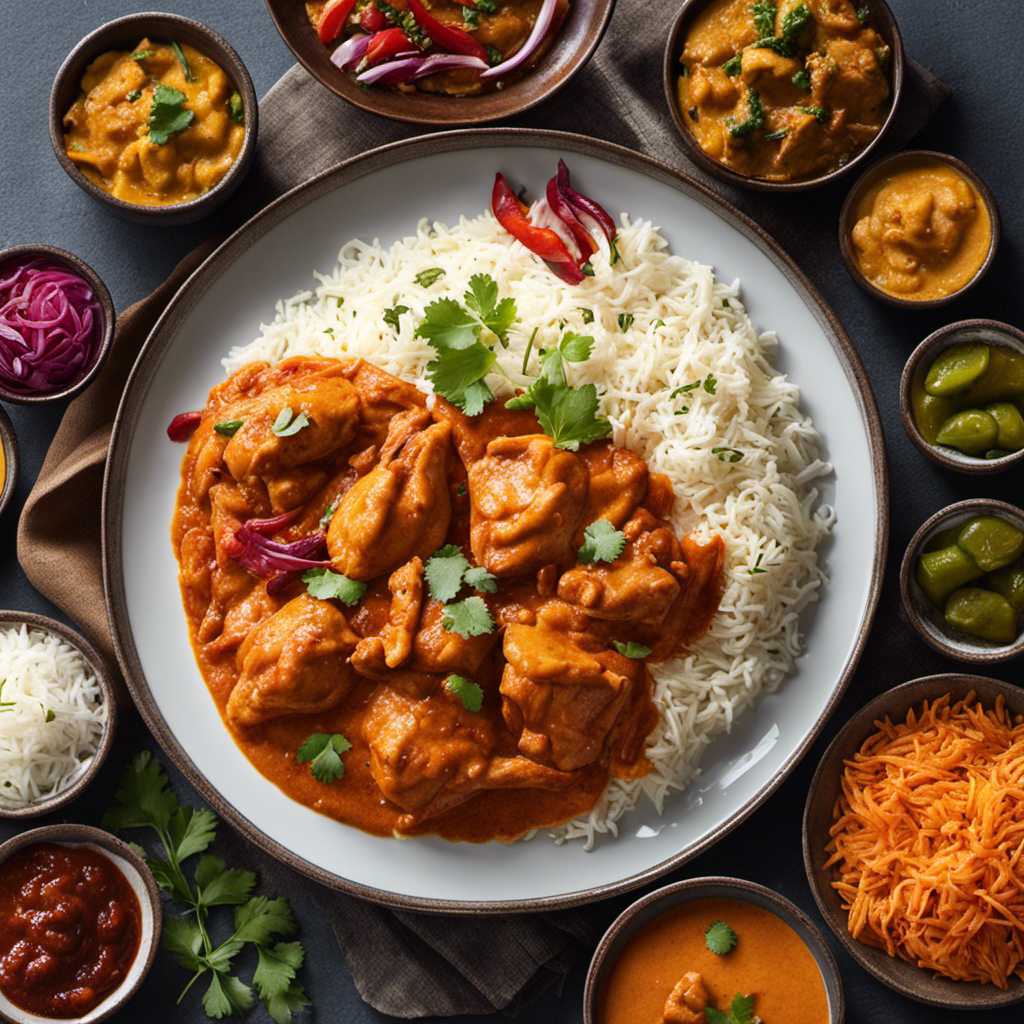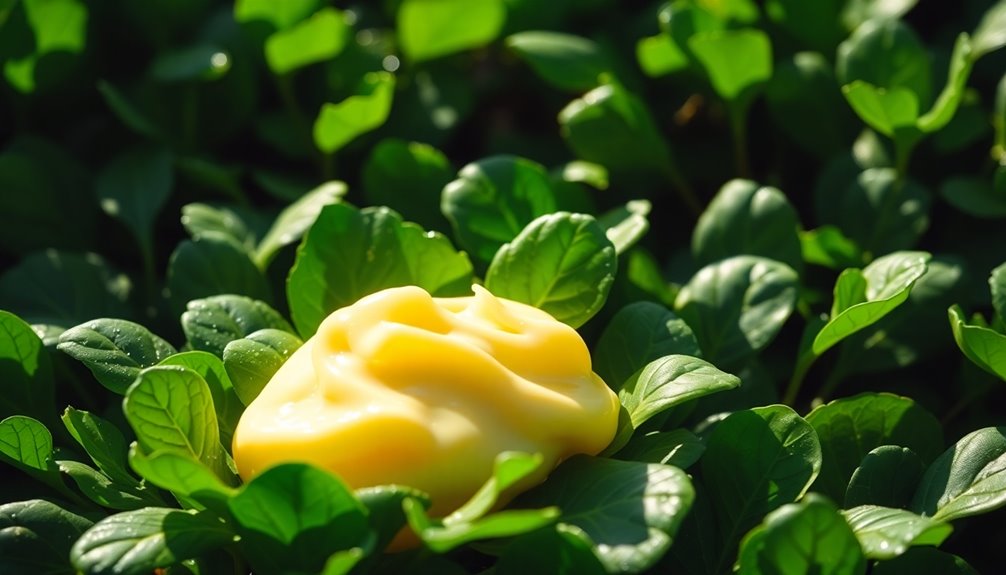As a butter enthusiast, I have always been fascinated by the incredible transformation that occurs when cream goes through the process of fermentation.
In this article, I’ll delve into the world of fermented butter, exploring its origins, the science behind its creation, and the numerous benefits it offers.
Whether you’re a culinary connoisseur or simply curious about the wonders of fermentation, this article will guide you through the process of making your own fermented butter at home and introduce you to the diverse array of flavors and types available.
Get ready to embark on a buttery journey like no other!
Key Takeaways
- Fermented butter originated in ancient times and was valued for its long shelf life and nutritional benefits.
- The fermentation process involves microorganisms like lactic acid bacteria, which transform cream into butter with distinct flavors and textures.
- Consuming fermented butter provides probiotics, beneficial fatty acids, fat-soluble vitamins, and anti-inflammatory properties.
- Making fermented butter at home involves heating the cream, adding live bacteria culture, fermenting at room temperature, refrigerating, and churning to separate into butter and buttermilk.
The Origins of Fermented Butter
I learned that fermented butter actually originated in ancient times. Its historical significance can’t be overstated, as it played a crucial role in the diets and economies of many ancient civilizations. From ancient Egypt to Mesopotamia, fermented butter was valued for its long shelf life and nutritional benefits.
The production of fermented butter varied across cultures, with different techniques and ingredients used. For example, the Vikings used souring agents like buttermilk or whey, while the Maasai people of East Africa used a mixture of cow’s milk and fresh blood. These cultural variations in fermented butter production highlight the diversity and creativity of human culinary practices throughout history.
Understanding the origins and cultural significance of fermented butter lays the foundation for exploring the science behind its production and health benefits.
The Science Behind Fermented Butter
Learning about the science behind the process can help me understand how fermented butter is made.
Fermented butter is created through a fermentation process, which involves the use of microorganisms. These microorganisms play a crucial role in transforming the cream into butter with distinct flavors and textures.
Here is a breakdown of the science behind the fermentation process of butter:
-
Fermentation process: Fermented butter is made by allowing cream to undergo fermentation, which is the process of converting sugars into acids, gases, or alcohol. This process enhances the flavor and texture of the butter.
-
Microorganisms involved: The fermentation of butter relies on the activity of lactic acid bacteria, such as Lactococcus and Streptococcus. These bacteria consume the lactose present in the cream and produce lactic acid, giving the butter its tangy taste.
-
Enzymatic reactions: During fermentation, enzymes present in the cream break down the fat molecules into smaller components, resulting in the formation of compounds that contribute to the unique aroma and flavor of fermented butter.
Understanding the science behind the fermentation process of butter can help me appreciate the benefits of consuming fermented butter.
Benefits of Consuming Fermented Butter
Consuming fermented butter can provide numerous health benefits due to its rich source of probiotics. Fermented butter is not only delicious but also offers a range of nutritional properties that can enhance our well-being. Let’s take a closer look at the benefits of consuming fermented butter:
| Nutritional Properties | Culinary Applications |
|---|---|
| High in probiotics, which promote gut health | Can be used as a spread on bread or toast |
| Contains beneficial fatty acids like butyrate | Adds richness and depth to sauces and dressings |
| Rich in fat-soluble vitamins A, D, E, and K | Enhances the flavor of baked goods |
| Provides a good source of CLA, which has anti-inflammatory properties | Can be used in place of regular butter in cooking |
With its nutritional properties and versatile culinary applications, fermented butter is a great addition to any diet. Now, let’s explore how to make fermented butter at home and enjoy its many benefits firsthand.
How to Make Fermented Butter at Home
To make homemade fermented butter, I start by culturing cream with live bacteria cultures. This process not only adds health benefits to the butter but also enhances its flavor.
Here’s a step-by-step guide on how to make fermented butter at home:
-
Start by heating the cream to a specific temperature to kill any harmful bacteria.
-
Allow the cream to cool slightly and then add a small amount of live bacteria culture, such as yogurt or kefir.
-
Cover the cream and let it sit at room temperature for several hours or overnight, allowing the bacteria to ferment the cream. This fermentation process produces lactic acid, which gives the butter its tangy flavor and helps improve digestion.
-
Once fermented, refrigerate the cream until it solidifies.
-
Finally, churn the cream in a food processor or mixer until it separates into butter and buttermilk.
Exploring Different Types of Fermented Butter
I love experimenting with various types of cultured cream to create unique and flavorful spreads.
When it comes to fermented butter, the possibilities are endless. Different flavors can be achieved by using various cultures and fermentation techniques. For example, adding a mesophilic culture can result in a mild and tangy flavor, while a thermophilic culture can produce a more robust and nutty taste. Additionally, incorporating herbs, spices, or even fruits into the butter during the fermentation process can further enhance the flavor profile.
Apart from the delicious taste, fermented butter also offers numerous health benefits. It’s rich in probiotics, which promote gut health and boost the immune system. Fermented butter is also easier to digest compared to regular butter, making it a great option for individuals with lactose intolerance.
Frequently Asked Questions
Can Fermented Butter Be Used as a Substitute for Regular Butter in Recipes?
Yes, fermented butter can be used as a substitute for regular butter in recipes. It not only adds a rich and creamy flavor to dishes but also offers several benefits.
Fermented butter is easier to digest, contains more probiotics, and has a higher concentration of nutrients. Making fermented butter at home is a simple process that involves culturing cream with beneficial bacteria.
This creates a tangy and flavorful butter that can elevate the taste of any recipe.
Is Fermented Butter Lactose-Free and Suitable for Individuals With Lactose Intolerance?
Fermented butter, with its low lactose content, is a suitable option for individuals with lactose intolerance. It undergoes a process where beneficial bacteria consume lactose, making it easier to digest. This means that people who are lactose intolerant can still enjoy the rich flavor and creamy texture of butter without experiencing discomfort.
Additionally, fermented foods, like fermented butter, have been known to promote gut health by providing probiotics and aiding in digestion.
Does Fermented Butter Have a Longer Shelf Life Compared to Regular Butter?
Fermented butter, also known as cultured butter, offers several benefits compared to regular butter.
One of these advantages is its longer shelf life. The fermentation process helps to preserve the butter by creating an acidic environment that inhibits the growth of spoilage-causing bacteria.
This means that fermented butter can last longer without spoiling, making it a practical choice for those who want their butter to stay fresh for a longer period of time.
Are There Any Specific Health Conditions or Dietary Restrictions That Should Be Considered Before Consuming Fermented Butter?
Before consuming fermented butter, it’s essential to consider any specific health conditions or dietary restrictions. While fermented butter does offer health benefits due to its fermentation process, it may not be suitable for everyone.
Individuals with lactose intolerance or dairy allergies should exercise caution. Additionally, those with specific dietary restrictions, such as a vegan or plant-based diet, may choose to avoid fermented butter.
It’s always advisable to consult with a healthcare professional or registered dietitian before making any dietary changes.
Can Fermented Butter Be Frozen for Long-Term Storage?
Yes, fermented butter can be frozen for long-term storage. It’s a great way to ensure you always have some on hand for your fermented butter recipes.
Freezing not only extends its shelf life, but also preserves the beneficial bacteria that make fermented butter so special.
When you’re ready to use it, simply thaw it in the refrigerator and enjoy all the wonderful benefits of fermented butter.
Conclusion
Fermented butter, a product of ancient origins and scientific processes, offers numerous benefits to those who consume it. By harnessing the power of fermentation, this butter becomes a rich source of probiotics and enzymes, promoting gut health and aiding digestion.
Making fermented butter at home is a simple process that allows for experimentation with different flavors and textures. Just as a caterpillar transforms into a butterfly, the transformation of raw cream into fermented butter brings forth a delightful and nourishing product.
